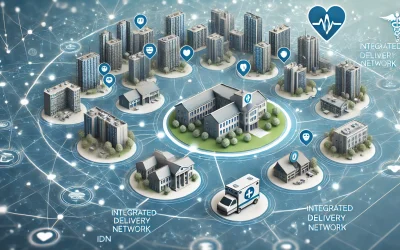Medical billing and coding are at the core of our healthcare reimbursement system. For providers, payers, and patients, these standardized codes ensure accurate payment for services rendered and promote transparency in healthcare. Two critical code sets used for billing in the United States are HCPCS Level I, commonly known as CPT codes, and HCPCS Level II, also referred to as Alphanumeric HCPCS. According to the Centers for Medicare & Medicaid Services (CMS), over 5 billion healthcare claims are processed each year in the U.S. alone. In this post, we will delve into the fundamental differences between these two code sets, their unique purposes, and why proper use is crucial for compliance and reimbursement.
HCPCS Level I (CPT) Codes
Overview of CPT Codes
HCPCS (Healthcare Common Procedure Coding System) Level I codes are synonymous with the Current Procedural Terminology (CPT) codes. The American Medical Association (AMA) developed, copyrighted, and actively maintains this code set. The CPT manual is updated annually to keep pace with the constant evolution of medical technology and procedures, ensuring coders have the most relevant information at their fingertips.
- Purpose: CPT codes are used by physicians and outpatient facilities to report procedures and services, such as surgeries, office visits, and diagnostic tests.
- Scope: With over 10,000 codes (as of 2023), CPT ensures detailed representation of professional services provided in outpatient and ambulatory settings, including physician visits to inpatients.
- Structure: These five-digit numeric codes categorize medical procedures under broad sections (e.g., Evaluation and Management, Anesthesia, Surgery, Radiology, Pathology and Laboratory, and Medicine).
According to the AMA, an estimated 7.7 billion CPT-coded medical services are performed annually. Mastering CPT codes is essential for accurate billing, regulatory compliance, and streamlined claim processing.
Why Correct Use of CPT Codes Matters
- Accurate Reimbursement: Insurance companies rely on CPT codes to determine the payment for a procedure. Any mistake in coding can lead to underpayments or claim denials.
- Regulatory Compliance: CPT codes are recognized nationwide and are integral to most health insurance programs. Proper coding helps maintain compliance with federal, state, and private payer regulations.
- Efficiency in Healthcare Systems: Standardized codes reduce administrative burdens and improve communication between providers and payers, cutting down the potential for errors and delays in payment.
For more detailed information, visit the American Medical Association’s official CPT page.
HCPCS Level II (Alphanumeric HCPCS)
Overview of HCPCS Level II Codes
While CPT codes cover most medical procedures, the healthcare system also needs codes for various products, supplies, and services not included in the CPT code set—this is where HCPCS Level II comes into play. These codes, commonly called Alphanumeric HCPCS codes (because they start with a letter followed by four digits), are primarily maintained by the Centers for Medicare & Medicaid Services (CMS).
- Purpose: HCPCS Level II codes identify specific products, supplies, and services such as ambulance services, durable medical equipment (DME), prosthetics, orthotics, and other items necessary for patient care.
- Scope: There are approximately 6,000 alphanumeric codes in HCPCS Level II, a number that continues to grow as new devices and products enter the market.
- Exceptions: Dental services, designated by D codes, are maintained by the American Dental Association (ADA), not by CMS.
According to recent CMS data, durable medical equipment alone accounts for over $55 billion in annual expenditures in the United States, highlighting the vital role of HCPCS Level II codes in claims processing and reimbursement.
Importance of HCPCS Level II for Billing
- Covers Non-Procedure Items: Since CPT codes do not address supplies or equipment, HCPCS Level II fills this gap, ensuring providers can bill accurately for items like walkers, wheelchairs, and injection drugs.
- Facilitates Tracking and Utilization: By assigning specific codes, payers can track how frequently certain devices or products are used, helping in budgeting and policy-making decisions.
- Ensures Proper Payment: Providers need to understand these codes to receive correct reimbursement for services that go beyond routine procedures—especially in areas like home health, rehabilitation, and emergency transportation.
Learn more about HCPCS Level II from the CMS official website.
Key Takeaways and Best Practices
- Stay Updated Annually: Both the CPT and HCPCS Level II code sets are revised at least once a year. Regularly review updates, as new codes are introduced and old codes may be deleted or redefined.
- Use the Correct Code Set: Always differentiate whether you are billing for professional services (HCPCS Level I / CPT) or for supplies and equipment (HCPCS Level II).
- Leverage Modifiers Appropriately: Modifiers can further specify the nature of a service or item (e.g., bilateral procedures, reduced services, or site-specific changes). HCPCS Level I and Level II both contain modifiers, but they are not interchangeable.
- Invest in Training: Coding inaccuracies can lead to revenue loss, compliance issues, and potential legal complications. Training staff or obtaining professional certifications (e.g., CPC, COC, CPMA) can mitigate these risks.
- Use Reliable Resources: Official publications from the AMA and CMS websites are the gold standard for coding information. Third-party coding books, electronic tools, and software solutions can also help keep your practice in alignment with guidelines.
Final Thoughts
Understanding the differences between HCPCS Level I (CPT) and HCPCS Level II (Alphanumeric) codes is imperative for any healthcare organization aiming for compliance, accurate billing, and maximum reimbursement. CPT codes cover the broad scope of medical procedures and professional services, while HCPCS Level II focuses on the products, supplies, and services not found in the CPT set. Combined, these code sets allow for the seamless reporting of billions of healthcare services each year.
If you are a healthcare provider, billing specialist, or administrator, investing time in mastering these codes—and regularly updating your knowledge—can help streamline claim submissions, reduce claim denials, and ensure ethical and legal compliance. By understanding both code sets’ unique roles, you can safeguard your organization against revenue loss and maintain a strong relationship with payers.
For further guidance and detailed, up-to-date information:
- Visit the AMA’s CPT website
- Explore HCPCS Level II resources at CMS.gov
- Find dental codes and resources at the American Dental Association.
By staying informed, you’ll be better positioned to optimize your billing processes, enhance patient care, and ultimately contribute to a more efficient and transparent healthcare system.





